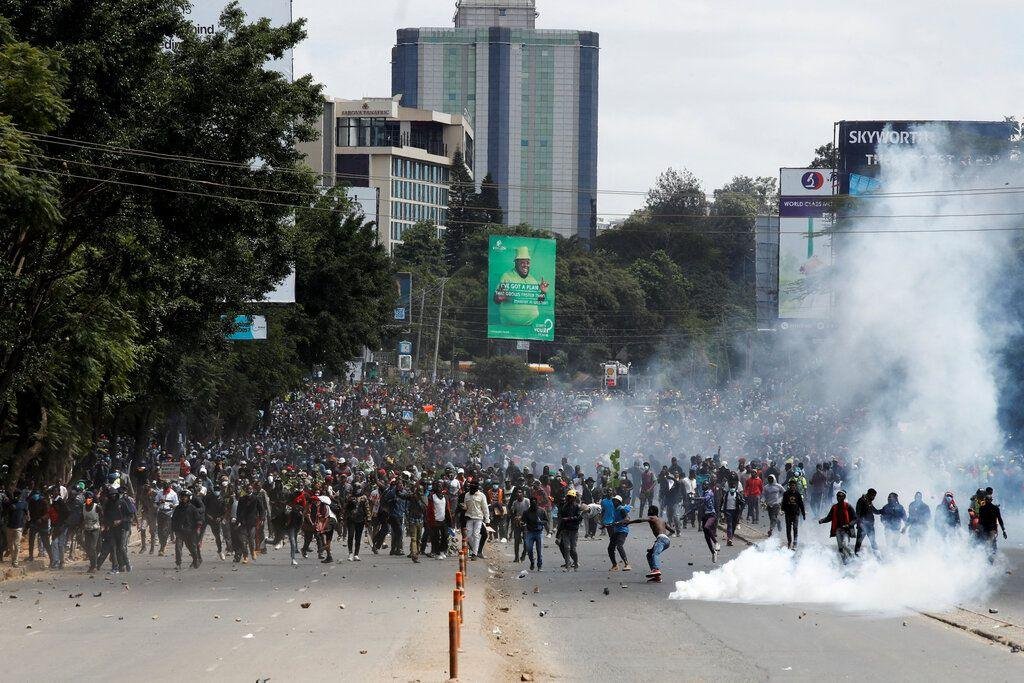
In recent weeks, Kenya has been gripped by a wave of protests that have shaken the nation to its core. What began as a response to proposed tax hikes has rapidly evolved into a broader movement challenging the very foundations of President William Ruto’s government. This blog post aims to provide a comprehensive analysis of the situation, exploring the roots of the unrest, its progression, and the potential implications for Kenya’s future.
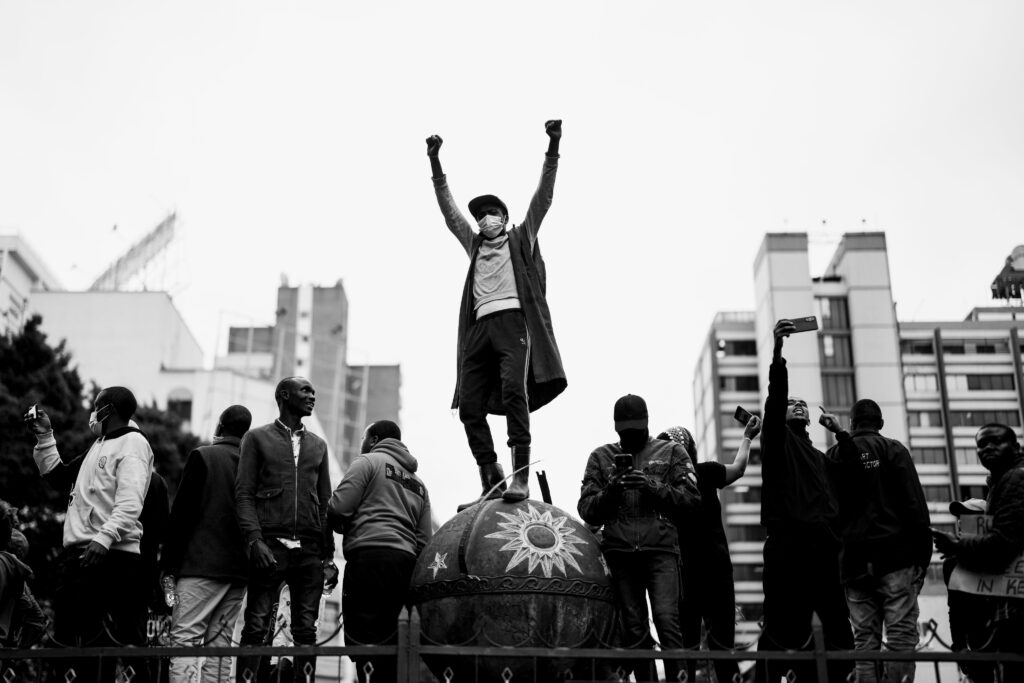
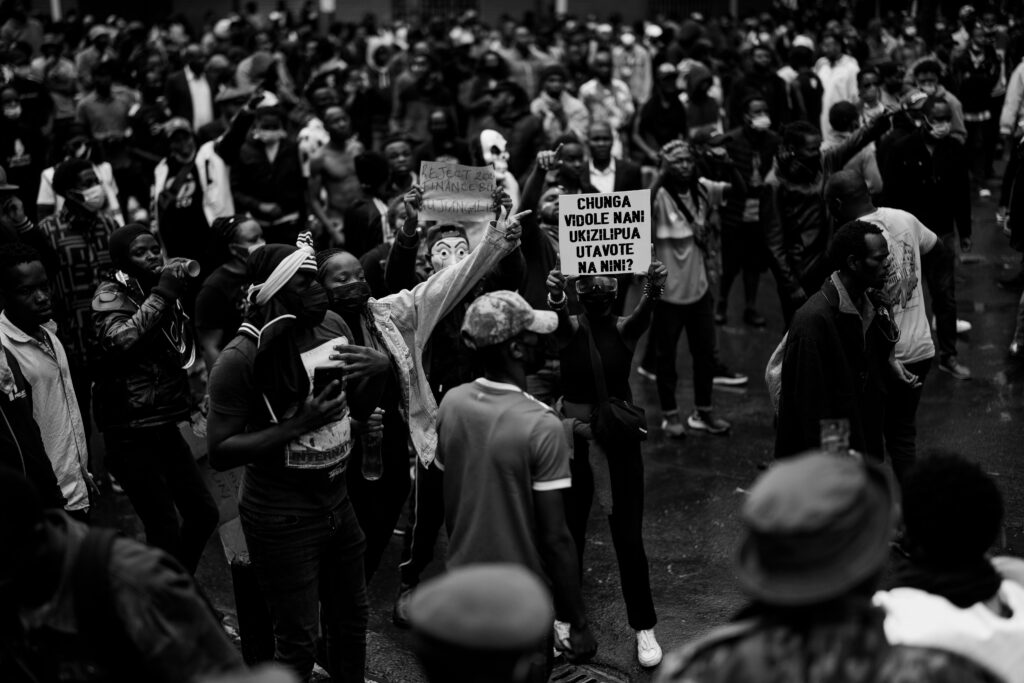
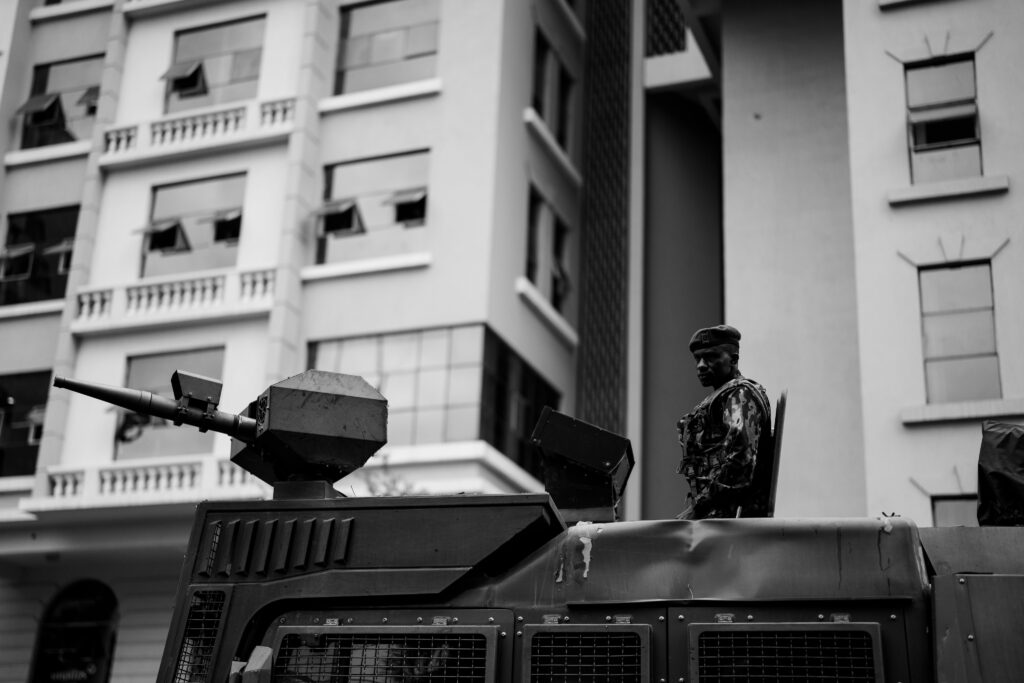
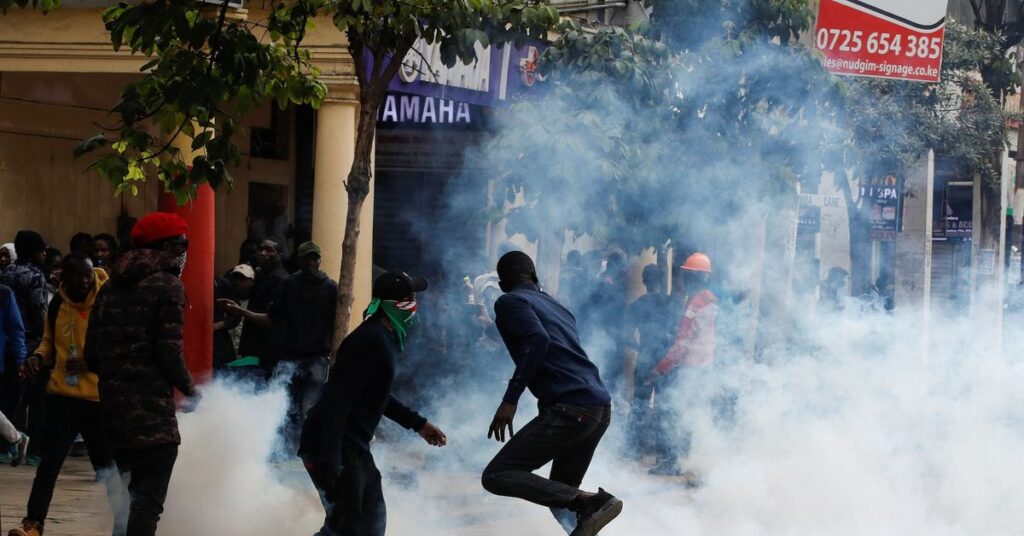
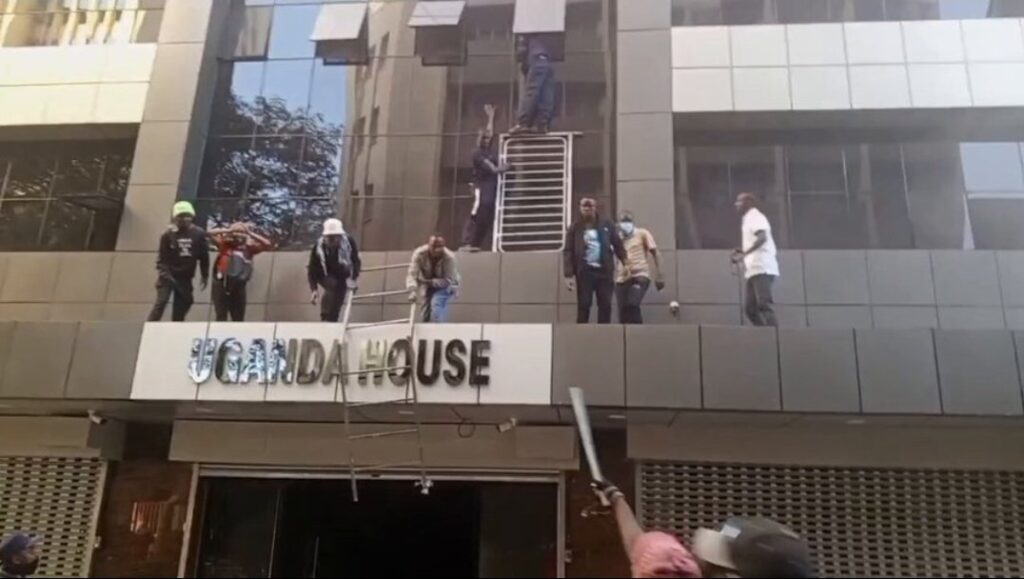
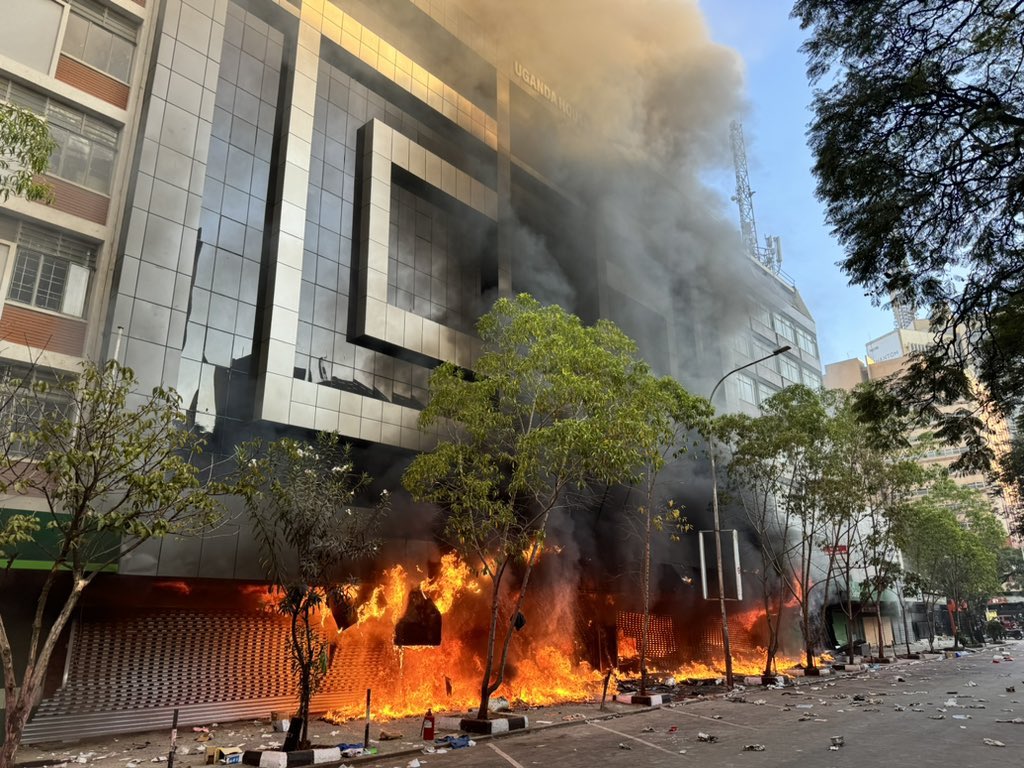




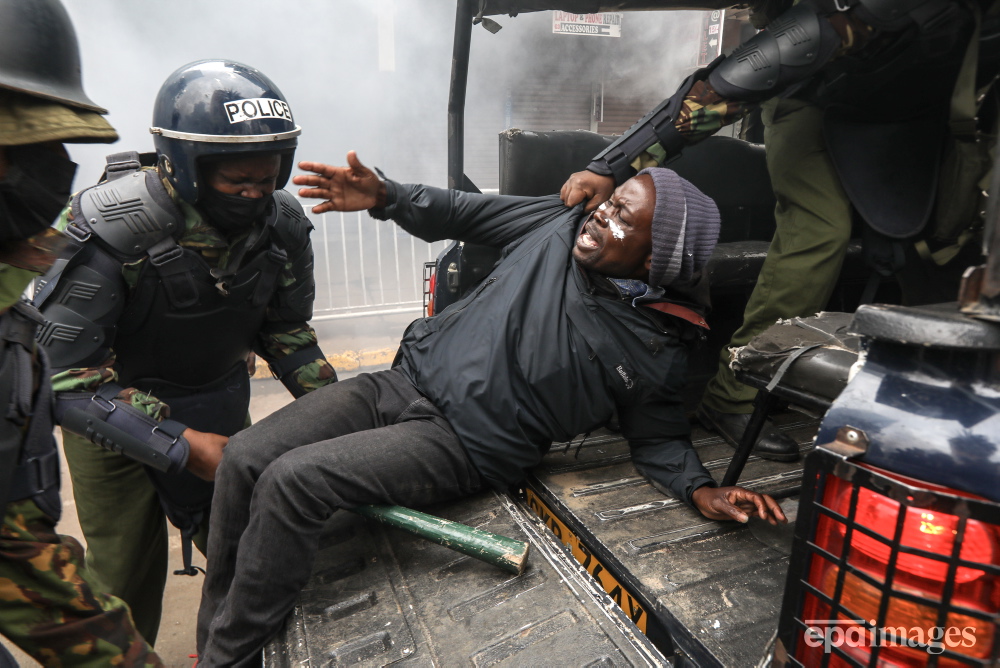
I. The Spark: Proposed Tax Hikes and Economic Pressure
A. The Government’s Fiscal Dilemma
The seeds of the current crisis were sown in the halls of Kenya’s finance ministry. Faced with a growing debt burden and pressure from international lenders, President Ruto’s administration proposed a series of tax increases aimed at bolstering the country’s fiscal position. The government argued that these measures were necessary to:
- Address the ballooning budget deficit
- Meet the demands of international creditors, particularly the International Monetary Fund (IMF)
- Put Kenya on a path to long-term economic stability
B. The Proposed Tax Measures
The tax hikes, outlined in a controversial finance bill, targeted a wide range of everyday items, including:
- Bread
- Cooking oil
- Diapers
- Fuel
These products form the backbone of daily life for millions of Kenyans, making the proposed increases particularly contentious. The government’s rationale was that by broadening the tax base and increasing revenue from these essential goods, it could begin to address its fiscal challenges without resorting to more drastic measures.
C. Public Reaction and Initial Protests
The announcement of the proposed tax hikes was met with immediate and fierce backlash from the Kenyan public. The reaction was particularly strong among the country’s youth, who saw the measures as yet another burden on their already strained financial situations. Key points of contention included:
- The regressive nature of the taxes, which would disproportionately affect lower-income Kenyans
- The perceived insensitivity of the government to the economic hardships faced by ordinary citizens
- Questions about the government’s priorities and its commitment to addressing root causes of economic instability
As news of the proposals spread, spontaneous protests began to erupt across the country. What started as isolated demonstrations quickly coalesced into a more organized movement, with opposition leaders and civil society organizations rallying support for their cause.
II. From Tax Protests to National Movement
A. Escalation of Demonstrations
As the protests gained momentum, they began to take on a life of their own. What had started as focused opposition to specific tax measures evolved into a broader expression of discontent with the Ruto administration and the political establishment as a whole. Key developments included:
- Increased participation from a wide cross-section of Kenyan society
- The emergence of new protest leaders and organizers
- The use of social media to coordinate actions and spread information
- Growing international attention on the situation in Kenya
B. Widening Scope of Grievances
As the movement grew, protesters began to articulate a more comprehensive set of demands that went far beyond the initial tax issue. These grievances included:
- Long-standing concerns about corruption in government
- Economic inequality and lack of opportunities for young Kenyans
- Perceived mismanagement of public resources
- Calls for political reform and greater accountability
This expansion of focus transformed what might have been a short-lived tax protest into a sustained challenge to the legitimacy of the Ruto government.
C. Violent Clashes and Government Response
As the protests intensified, tensions between demonstrators and security forces reached a boiling point. Several incidents marked a significant escalation in the conflict:
- Storming of the Kenyan Parliament: In a dramatic turn of events, protesters managed to breach security at the parliament building, setting parts of it on fire. This act of defiance sent shockwaves through the political establishment and signaled the depth of public anger.
- Security Force Crackdown: In response to the escalating unrest, the government deployed a heavy-handed security response. Reports emerged of security forces opening fire on protesters, leading to numerous casualties.
- Mounting Death Toll: Human rights groups reported that at least 23 people had been killed in the clashes, sparking outrage both domestically and internationally.
The violent turn of events marked a critical juncture in the protest movement, raising serious questions about the government’s handling of the situation and its respect for civil liberties and human rights.
III. Government Response and Political Fallout
A. Ruto’s Initial Stance
In the early stages of the protests, President Ruto and his administration attempted to stand firm on their proposed economic measures. They argued that the tax increases were necessary for the long-term health of the Kenyan economy and that short-term pain would lead to long-term gain. Key elements of the government’s initial response included:
- Public statements defending the necessity of the tax hikes
- Attempts to characterize the protesters as a minority opposed to necessary reforms
- Calls for calm and a return to normalcy
B. Escalating Pressure and Policy Reversal
As the protests grew in size and intensity, and as the death toll from clashes with security forces mounted, the political pressure on Ruto’s government became overwhelming. In a significant reversal, the administration announced:
- The withdrawal of the contentious finance bill
- A commitment to revisit the proposed tax measures
- Calls for dialogue with opposition leaders and protest organizers
This policy U-turn was seen as a major victory for the protest movement and a significant blow to Ruto’s political authority.
C. Calls for Ruto’s Resignation
Despite the government’s concessions on the tax issue, many protesters were not satisfied. The movement had evolved beyond its initial focus, and a new demand emerged: President Ruto’s resignation. Protesters argued that:
- Ruto had lost the trust of the Kenyan people
- The violent response to the protests disqualified him from leadership
- Deeper reforms were needed that the current administration was unwilling or unable to implement
These calls for resignation represented a significant escalation of the political crisis, moving beyond policy disagreements to challenge the very legitimacy of the government.
IV. Underlying Issues and Root Causes
To truly understand the depth and persistence of the protests in Kenya, it’s crucial to examine the underlying issues that have fueled public discontent. These long-standing grievances have created a powder keg of frustration that the proposed tax hikes simply ignited.
A. Economic Inequality and Youth Unemployment
One of the most pressing issues facing Kenya is the vast economic disparity between different segments of society. This inequality is particularly stark when it comes to the country’s youth:
- High youth unemployment rates: Despite being one of the most dynamic economies in East Africa, Kenya struggles with providing adequate job opportunities for its young population.
- Limited economic mobility: Many young Kenyans feel trapped in a cycle of poverty, with limited opportunities for advancement regardless of their education or skills.
- Urban-rural divide: Economic opportunities and development are often concentrated in urban areas, leaving rural communities feeling left behind.
These economic challenges have created a generation of frustrated young Kenyans who feel that the political establishment has failed them.
B. Corruption and Mismanagement of Public Resources
Corruption has long been a blight on Kenya’s political and economic landscape. The perception that public resources are being siphoned off by a small elite has fueled deep resentment among the general population:
- High-profile corruption scandals: Kenya has seen numerous corruption cases involving high-ranking government officials, eroding public trust in institutions.
- Inefficient use of public funds: Even when not explicitly corrupt, many Kenyans feel that government spending often fails to address the most pressing needs of the population.
- Lack of accountability: There’s a widespread perception that those involved in corruption rarely face meaningful consequences, further entrenching the problem.
The proposed tax hikes were seen by many as asking ordinary Kenyans to pay for the mismanagement and greed of the political class.
C. Political Disillusionment and Calls for Reform
The current protests also reflect a deeper disillusionment with Kenya’s political system:
- Broken promises: Many Kenyans feel that successive governments, including Ruto’s, have failed to deliver on campaign promises of reform and economic improvement.
- Ethnic politics: There’s growing frustration with the role that ethnic identity plays in Kenyan politics, often overshadowing policy issues and competence.
- Limited political alternatives: Some protesters argue that the current political system doesn’t offer meaningful alternatives, with power rotating between a small group of elites.
These factors have contributed to a sense that more fundamental political reforms are needed to address Kenya’s challenges.
V. The Role of Social Media and Technology
The protests in Kenya have been significantly shaped by the use of social media and technology, highlighting the evolving nature of political movements in the digital age.
A. Coordination and Organization
Social media platforms have played a crucial role in the organization and coordination of protests:
- Real-time updates: Protesters have used platforms like Twitter and WhatsApp to share information about demonstration locations, police movements, and potential dangers.
- Mobilization: Social media has allowed organizers to quickly mobilize large numbers of people, often outpacing traditional methods of organization.
- Decentralized leadership: The use of social media has enabled a more decentralized protest movement, making it harder for authorities to target specific leaders.
B. Information Dissemination
In a context where trust in traditional media is often low, social media has become a primary source of information for many Kenyans:
- Citizen journalism: Protesters have used smartphones to document events in real-time, often capturing incidents of violence or misconduct by security forces.
- Countering official narratives: Social media has allowed protesters to challenge government statements and present alternative perspectives on events.
- International attention: The use of social media has helped bring international attention to the protests, putting additional pressure on the Kenyan government.
C. Challenges and Controversies
While social media has been a powerful tool for the protest movement, it has also presented challenges:
- Misinformation: The rapid spread of information on social media has sometimes led to the circulation of false or misleading claims.
- Government attempts at control: There have been reports of government efforts to restrict internet access or monitor social media activity.
- Echo chambers: The algorithmic nature of social media can sometimes lead to echo chambers, potentially polarizing different segments of Kenyan society.
The role of social media in these protests underscores the need for digital literacy and responsible use of technology in political movements.
VI. International Reactions and Implications
The protests in Kenya have not occurred in isolation. As a key economic and political player in East Africa, the unrest in Kenya has drawn significant international attention and concern.
A. Regional Stability Concerns
Kenya’s neighbors and regional partners are watching the situation closely:
- Economic impact: As a major economic hub in East Africa, instability in Kenya could have ripple effects throughout the region.
- Refugee concerns: There are worries that prolonged unrest could lead to displacement, potentially affecting neighboring countries.
- Political influence: Some regional leaders fear that successful protests in Kenya could inspire similar movements in their own countries.
B. International Creditors and Economic Partners
The international financial community, including institutions like the IMF, are closely monitoring developments:
- Loan conditions: There are questions about how the withdrawal of the finance bill will affect Kenya’s agreements with international lenders.
- Investor confidence: The unrest has raised concerns about Kenya’s stability as an investment destination.
- Economic reform agenda: There’s uncertainty about the future of economic reforms that were seen as necessary by many international partners.
C. Human Rights Concerns
The violent crackdown on protesters has drawn criticism from international human rights organizations and some foreign governments:
- Calls for restraint: Several countries and international bodies have urged the Kenyan government to show restraint in its response to the protests.
- Investigations: There have been calls for independent investigations into the deaths of protesters.
- Potential sanctions: Some have suggested that continued violence could lead to targeted sanctions against individuals responsible for human rights abuses.
These international dimensions add another layer of complexity to the Kenyan government’s handling of the situation.
VII. The Way Forward: Potential Resolutions and Challenges
As the protests continue and the political crisis deepens, there are several potential paths forward, each with its own challenges and implications.
A. Dialogue and Negotiation
One potential resolution involves meaningful dialogue between the government and protest leaders:
- Advantages:
- Could lead to peaceful resolution
- Might result in substantive reforms
- Could restore some trust in political institutions
- Challenges:
- Identifying legitimate representatives for a decentralized movement
- Overcoming deep-seated mistrust
- Ensuring that any agreements are implemented
B. Political Reforms
Some argue that more fundamental political reforms are needed to address the root causes of discontent:
- Potential reforms:
- Anti-corruption measures
- Electoral system changes
- Decentralization of power
- Challenges:
- Resistance from entrenched interests
- Complexity of implementing deep structural changes
- Potential for reforms to be co-opted or watered down
C. Economic Measures
Addressing the economic grievances that fueled the protests will be crucial for long-term stability:
- Potential measures:
- Youth employment initiatives
- Investment in rural development
- Progressive taxation reforms
- Challenges:
- Balancing fiscal responsibility with social spending
- Attracting investment in an uncertain political climate
- Overcoming entrenched economic inequalities
D. Accountability for Violence
Addressing the violence that occurred during the protests will be essential for reconciliation:
- Potential steps:
- Independent investigations into protest deaths
- Prosecution of those responsible for violence
- Reforms to police and security forces
- Challenges:
- Resistance from security institutions
- Balancing accountability with stability
- Overcoming a culture of impunity
VIII. Conclusion: Kenya at a Crossroads
The protests that have swept across Kenya represent more than just opposition to a set of tax proposals. They have exposed deep-seated frustrations with the country’s political and economic systems, challenging the Ruto administration and the broader political establishment to address long-standing grievances.
As Kenya grapples with this crisis, several key questions emerge:
- Can the current political system reform itself to address the root causes of discontent, or is more fundamental change needed?
- How will the government balance the demands of protesters with the economic realities facing the country?
- What role will international actors play in shaping Kenya’s path forward?
- Can trust be restored between the government and the people, particularly in light of the violence that has occurred?
The answers to these questions will shape not just the immediate future of Kenya, but potentially the trajectory of democracy and development across East Africa. As the situation continues to evolve, it’s clear that Kenya stands at a critical juncture, with the potential for either significant positive change or deeper instability.
The protests have demonstrated the power of collective action and the deep desire for change among many Kenyans. How the government, civil society, and international partners respond to this moment will be crucial in determining whether this crisis becomes a catalyst for meaningful reform or a missed opportunity for progress.
As Kenya navigates these turbulent waters, the world watches, hoping for a peaceful and just resolution that can set the country on a path towards greater stability, equity, and prosperity. The coming weeks and months will be critical in shaping Kenya’s future and, potentially, offering lessons for other nations grappling with similar challenges in an increasingly complex and interconnected world.







